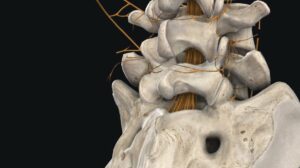NEW YORK (Reuters Health) – After organ transplantation, the overall risk of any new malignancy doubles, according to a new report from the U.S. National Cancer Institute.
The NCI study, reported online today in the Journal of the American Medical Association, found that transplant recipients have an elevated risk of 32 different types of cancers, including those closely tied to infection and the loss of immunologic control of oncogenic viruses, and others with no known infection link.
It’s “actually pretty shocking when presented like this how many different kinds of cancers transplant patients are (at) risk for and how high the magnitude of risk is compared to general population,” said Dr. Scott Palmer, Scientific Director of the Lung Transplant Program at Duke University Medical Center, Durham, North Carolina, in an email to Reuters Health.
The findings “reinforce that all of our patients ought to (undergo) more frequent and more vigorous cancer screening,” said Dr. Palmer, who was not involved in the new report. “Population based recommendations don’t apply to transplant patients and screening should be more aggressive in these patients given their higher risk.”
Increased cancer risks after transplant have been reported before, but most studies have been relatively small and limited to kidney recipients, according to the authors of the new report.
“What’s new about this study is that it’s the largest study in the world to date, and it includes people who got a whole range of organ transplants, not just kidney, but also liver, heart, and lung,” lead author Dr. Eric Engels, from the NCI in Rockville, Maryland, told Reuters Health.
Using linked data for 1987-2008 from the U.S. Scientific Registry of Transplant Recipients and cancer registries in 13 states and regions, his team analyzed recipients of 175,732 solid organ transplants (which account for 39.7% of all transplants done in the U.S. over that period).
During follow-up, 10,656 cancers were diagnosed in organ recipients, for an overall incidence of 1375 per 11359,000 person-years — twice as high as the adjusted rate of cancer diagnoses in the general population (standard incidence ratio, 2.10).
The excess absolute risk attributable to transplantation is approximately 0.7% per year, the researchers said.
The most common cancers that occurred more frequently in transplant recipients were non-Hodgkin’s lymphoma (SIR, 7.54) and cancers of the lung (SIR, 1.97), liver (SIR, 11.56), and kidney (SIR, 4.65).
The risk of liver cancer was only elevated in liver recipients. However, lung cancer risks were higher than expected in lung, kidney, liver, and heart recipients, and kidney cancer risks were was elevated among kidney, liver, and heart transplant patients.
There are likely multiple mechanisms behind the elevated cancer risks, Dr. Engels said, including immunosuppressant medications and underlying medical conditions — including smoking damage in the case of lung and heart recipients and hepatitis C in liver recipients.
He did not say that all transplant recipients should necessarily be screened more frequently than general-population guidelines recommend — but he does hope that the findings will help inform future guidelines specific for these patients.
For now, Dr. Engels said, transplant physicians “should carefully evaluate transplant candidates for cancer risk factors, and after transplant consider those factors in managing transplant recipients.”
Physicians should help recipients quit smoking, Dr. Engels emphasized, and encourage them to avoid unnecessary sun exposure. The SIR for nonmelanoma, nonepithelial skin cancer in recipients was 13.85.
He and his colleagues will continue to analyze the linked transplant and cancer registry data, he said, in an effort to identify specific cancer risk factors for certain types of transplant patients.
The research team admits that “patterns of cancer risk in transplant recipients may partly reflect artifacts of cancer screening. For example, decreased breast and prostate cancer risk may arise from screening before transplant, leading to removal of prevalent cancers or deferral of transplant in candidates with cancer. Additionally, transplant recipients may appear to have elevated risk for some cancers (e.g., melanoma, cancers of the kidney or thyroid) because of heightened medical surveillance.”
“In the long run the most important message is how imperfect our current immunosuppression really is for our patients,” Dr. Palmer concluded in his email.
“We have drugs that reduce the risk of rejection and allow patients to successfully undergo solid organ transplant but they pay a price in terms of significant toxicity including a higher risk for many cancers. It should reinforce the need to develop new innovative ways to prevent rejection that don’t have such a high price to pay in terms of side effects.”
Reference:
JAMA 2011.




